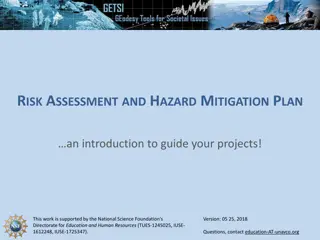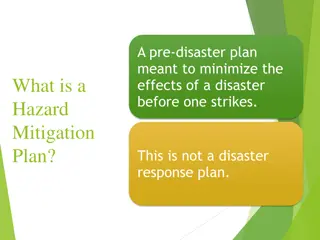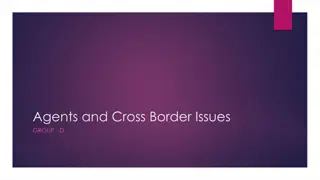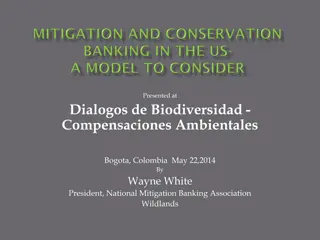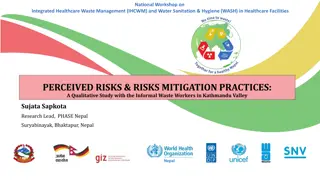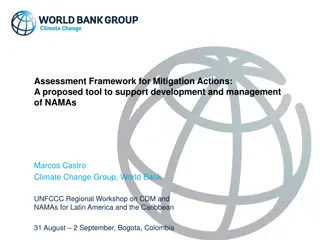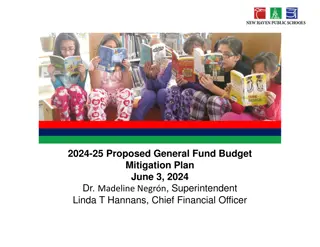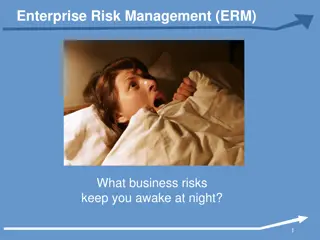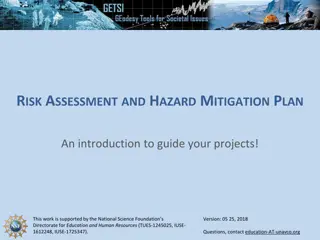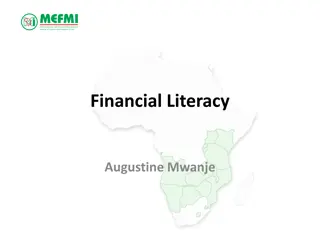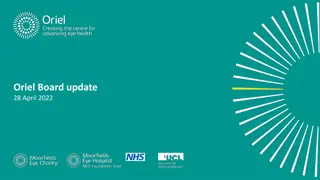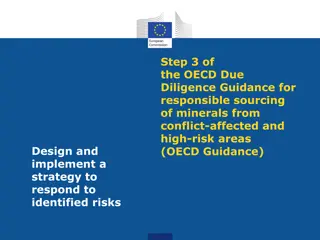Understanding Financial Risks and Mitigation Strategies
Explore the concept of financial risks, learn how to identify and mitigate them, and improve your financial decision-making skills. This module covers definitions, typical risks, and strategies to safeguard your finances. Discover the four main clusters of financial risks and how to implement countermeasures effectively.
Download Presentation

Please find below an Image/Link to download the presentation.
The content on the website is provided AS IS for your information and personal use only. It may not be sold, licensed, or shared on other websites without obtaining consent from the author. Download presentation by click this link. If you encounter any issues during the download, it is possible that the publisher has removed the file from their server.
E N D
Presentation Transcript
fly fly- -project.eu project.eu Dangers & Risks of Finance Partner: IDP & IHF "The European Commission support for the production of this publication does not constitute endorsement of the contents which reflects the views only of the authors, and the Commission cannot be held responsible for any use which may be made of the information contained therein."
Objectives & Goals At the end of this module you will be able to: Familiarize with the concept of Financial Risk Including definition and basic taxonomy Recognize typical risks for your own finances and make better informed decisions Implements simple countermeasures Strategizing plans B and safety nets "The European Commission support for the production of this publication does not constitute endorsement of the contents which reflects the views only of the authors, and the Commission cannot be held responsible for any use which may be made of the information contained therein."
Index Unit 1: What does Financial Risk mean? Section 1: Seeking for a definition Section 2: Four main cluster of financial risks Section 3: Breakdown of typical financial risks Unit 2: How do you mitigate the financial risk? Section 1: A four-dimension approach "The European Commission support for the production of this publication does not constitute endorsement of the contents which reflects the views only of the authors, and the Commission cannot be held responsible for any use which may be made of the information contained therein."
Unit 1: What does Financial Risk mean? Seeking for a definition By Financial Risk, we usually refer to a form of risk emerging from an event, situation, dynamic that might negatively impact people s financial status quo. The cluster of potential events from which the financial risk might arise from are numerous and very diverse among each others. Specialised literature offers many different taxonomy to describe the most typical types of Financial Risk. In the content of this module, the taxonomy of risk is structured so as to guide learners throng the most common risks that one might experience while managing his / her personal finances "The European Commission support for the production of this publication does not constitute endorsement of the contents which reflects the views only of the authors, and the Commission cannot be held responsible for any use which may be made of the information contained therein."
Four main clusters of Financial Risks General Financial Risk Individual Financial Risk Time-based Financial Risk Impact-based Financial Risk When we talk about General Financial Risk, we refer to any event that might generate a loss. This Risk pertains to the person very own finances and it might be generated by poor judgements and / or and overestimation of favorable trends and dynamics Financial Risks can be also categorized based on the timeframe involved and considered. Depending on the domain interested by the risk, people might face several negative outcomes that again might be simple consequence of bad luck, or poor judgement This type of risk is essentially related to the origin and source of the triggering event. There is no easy way to estimate their impact, and as in some cases, their likelihood at all "The European Commission support for the production of this publication does not constitute endorsement of the contents which reflects the views only of the authors, and the Commission cannot be held responsible for any use which may be made of the information contained therein."
General Financial Risks Systemic Financial Risk Non-Systemic Financial Risk In broad terms, Systemic Financial Risk generates from events that affect and impact all people and from which you cannot escape from. In this case we refer to events that might potentially affect the person only or its closest groups of reference (the organisation he works for, family, etc.). As the term implies, Systemic Financial Risk stems from triggers that impact the socio-economic ecosystem as a whole (i.e., instable political climate) and translates topically into increased Market Volatility (less capacity to foreseen and decode future market trends), increased interest rates (less capacity to access the credit market), increased taxes (less purchasing power). Typical Non-systemic financial Risk scenarios are represented by a sudden illness, a sudden malfunctioning of a machinery, etc. "The European Commission support for the production of this publication does not constitute endorsement of the contents which reflects the views only of the authors, and the Commission cannot be held responsible for any use which may be made of the information contained therein."
Individual Financial Risks Income Risk Expenditure Risk Investment Risk Debt Risk Income Risk might relate to a series of event that affect work- ability of the person, and ultimately his / her capacity to earn an income More simply, when the expenditures that arise in a given period exceed the money available to cover them (when there is no sufficient money to meet the financial / economic needs) In this category we include any event related to depreciating of the asset owned by a person so much so that its value goes below the original price payed for its purchase The typical case is when people remains trapped to debts with high interest rates, or more in general, when they are no more able to afford the repayment of their debt Typical instances of Income Risk emerge in case of: Physical disability Dismissal Any other event excluding a person from the labor market "The European Commission support for the production of this publication does not constitute endorsement of the contents which reflects the views only of the authors, and the Commission cannot be held responsible for any use which may be made of the information contained therein."
Time-based Financial Risks Short-Term Financial Risk Long-Term Financial Risk That s the type of financial risk that arise in a relatively short period of time and that is difficult to predict (i.e., any sudden expense that is not included the budget). We talk about long-term financial risk impacts the long-term financial sustainability of a person and has much greater consequences for his / her economic stability. Short-term financial risk requires typically the full disposal of a certain money in a very short and concise period of time, weakening the personal savings of a person and the very same availability of this money for other purposes (i.e., saving, investment, etc.) This is the case for instance when families lose their main and only source of income due to the sudden (or gradual) inability to work of the only person responsible for the (economic) sustainment of the family. Please note that the term long-term refers to the temporal horizon of the effects and impact of the event, and not its actual happening in time. "The European Commission support for the production of this publication does not constitute endorsement of the contents which reflects the views only of the authors, and the Commission cannot be held responsible for any use which may be made of the information contained therein."
Impact-based Financial Risks Speculative Risk Fundamental Risk Static Risk This is the typical case of any sort of investment: people commit a certain among of money to a certain thing, in the hope that, at some point, this thing will generate more money that what it actually costed. When the events generating from the risk impact one person specifically, and the people around him / her at max, we talk about specific risk , meaning: the negative outcomes of the event has not negative repercussions outside of the people directly involved. Static Risk refers to a financial loss that might be caused by any non-economy related / systemic event. The triggering event happens in the here and now and it is typically covered by an insurance Dynamic Risk In general the elements of risk is inalienable from any type of investment, and it exists by default. The real issue come into play when either it is underestimated, not duly consider, or more simply ignored. Examples of fundamental risks are more common for instance when managing household expenses. It depends on macroeconomic events which have a direct impact on one s personal finances whatever he / she likes it or not (i.e., inflation, higher cost of raw materials) "The European Commission support for the production of this publication does not constitute endorsement of the contents which reflects the views only of the authors, and the Commission cannot be held responsible for any use which may be made of the information contained therein."
Unit 2: How do you mitigate the financial risk? A four-dimension approach Where there is a risk, there is also a countermeasure. To some extent, many forms of Financial Risk can be predicted, or at least estimated. Risk Management is first of all a matter of planning: being aware of the risk is halfway through the opera of covering and safeguarding yourself from unpleasant and disrupting scenarios. For an effective Risk Management, one must intervene on the five key financial elements from which the risk might arise: SURROUNDINGS REVENUE EXPENDITURE ASSETS/INVESTMENT DEBT vs CREDIT "The European Commission support for the production of this publication does not constitute endorsement of the contents which reflects the views only of the authors, and the Commission cannot be held responsible for any use which may be made of the information contained therein."
Revenue Management Be ready for a plan B Diversify your income Do not forget to set up a safety net so as to face with relative ease all short-term risks. Monitor your revenue stream(s) An insurance is the most robust and reliable resource that one might consider to delegate to others his / her own financial risk. Subscribe an insurance "The European Commission support for the production of this publication does not constitute endorsement of the contents which reflects the views only of the authors, and the Commission cannot be held responsible for any use which may be made of the information contained therein."
Expenditure Management A domestic budget will help you to plan more carefully all expenses, cutting wastes away if necessary. Budgeting A safety net helps you to contain the negative impact of a unexpected expenditure, an emergency fund is unlocked, indeed, in cases of emergencies so to say, when no other option is available. Planning an emergency gateway "The European Commission support for the production of this publication does not constitute endorsement of the contents which reflects the views only of the authors, and the Commission cannot be held responsible for any use which may be made of the information contained therein."
Asset/Investment Management As redundant as it sounds, this remains the most crucial & critical recommendation do you really know, and own, the necessary knowledge regarding that specific asset that you are betting own? Be careful where you put your money on This goes back to the fundamental need of having an adequate medium-long term oriented plan for investments: monitor your progresses and keep track of suitable fine-tuning measures. Set a goal and aim for it "The European Commission support for the production of this publication does not constitute endorsement of the contents which reflects the views only of the authors, and the Commission cannot be held responsible for any use which may be made of the information contained therein."
Debt/Credit Management Become proficient with the distinctive features of credit and debt (i.e., interest rate) Get familiar with the financial flows If you are not ready to go into debt, do not go into debt even more if the need for credit is motivated by futile needs. Assess your exposure in advance, and evaluate you capacity to cover your repayment plan. Know when to deep-dive into the ocean of debit "The European Commission support for the production of this publication does not constitute endorsement of the contents which reflects the views only of the authors, and the Commission cannot be held responsible for any use which may be made of the information contained therein."
Social awareness of the surroundings Do not reply to suspicious eMail, let alone downloading their contents and attachments. Fraudulent eMail are the most common means used by cyber-criminals to infiltrate the victim s personal and sensible data. eMail Fraud Fraudulent activity that involves a theft taking the number of a credit or debit card do not share sensible information unless strictly, check as frequent as possible outgoing / incoming flows of money from / to your account. Debit and Credit Card Fraud Internet fraud happens when someone uses the internet as a tool to take advantage of someone else through fraud. Online internet schemes nowadays are the most common type of frauds, stealing millions of dollars from victims each and every year. Internet Fraud "The European Commission support for the production of this publication does not constitute endorsement of the contents which reflects the views only of the authors, and the Commission cannot be held responsible for any use which may be made of the information contained therein."
Summing up Planning a countermeasure 1. Revenue 2. Expenditure 3. Asset/ Investment 4. Debt/Credit Types of Financial Risks 1. General 2. Individual 3. Tim-based 4. Impact-based "The European Commission support for the production of this publication does not constitute endorsement of the contents which reflects the views only of the authors, and the Commission cannot be held responsible for any use which may be made of the information contained therein."
fly fly- -project.eu project.eu Thank you! Partner: IDP & IHF "The European Commission support for the production of this publication does not constitute endorsement of the contents which reflects the views only of the authors, and the Commission cannot be held responsible for any use which may be made of the information contained therein."





